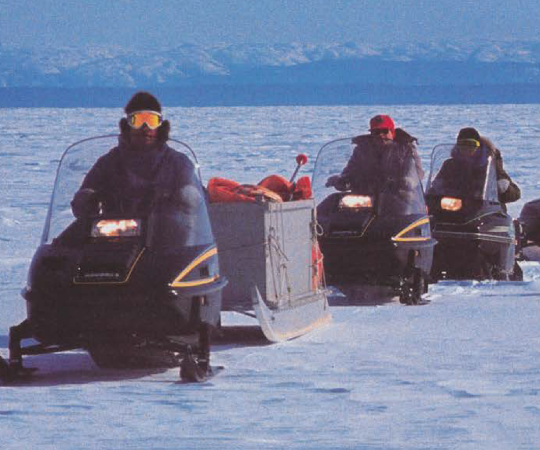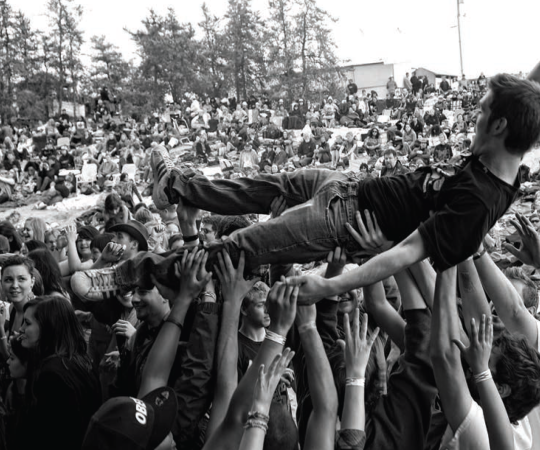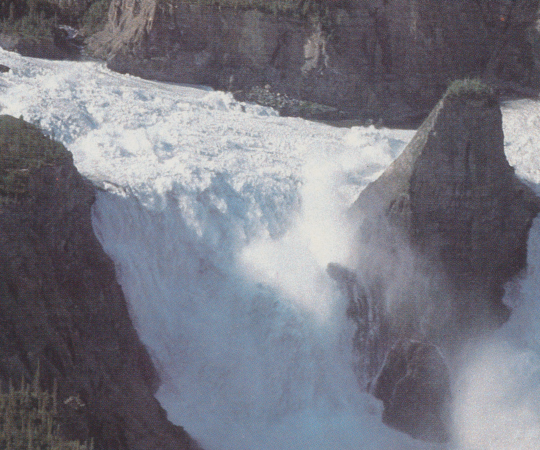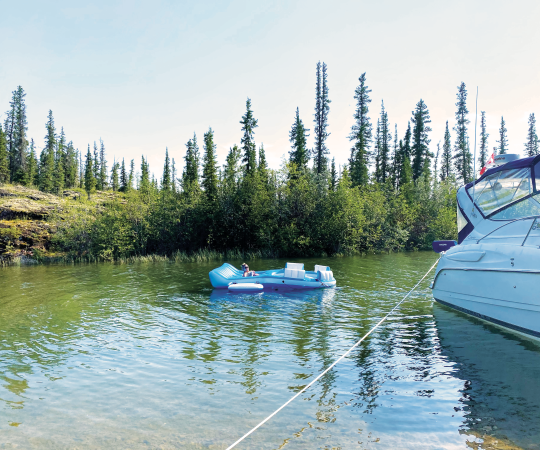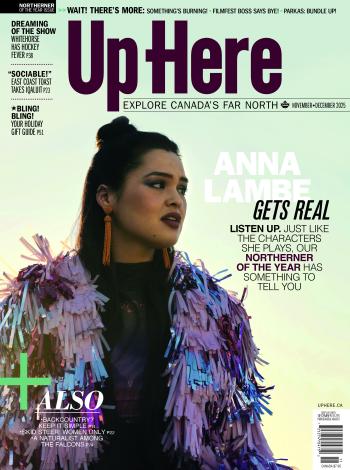As soon as they spotted aqpiqs, the three teenagers stepped off the wooden boardwalk, onto the soft, springy moss, and dropped down into a low squat. They rummaged through their backpacks, pulled iPods and BlackBerries out of their protective Ziploc bags, stuffed the electronics into their pockets, and shook open the now-empty bags. They set to work, the Ziplocs occasionally rustling as the aqpiqs (late-summer cloudberries) slowly filled the corners.
“Girls, we’re waiting for you!” their chaperone called out from up ahead. Beside her on the wooden boardwalk leading toward the hills just outside of Ilulissat, Greenland, was the rest of the group—two girls from southern Canada, one from California, another from Monaco. They hadn’t noticed the berries, and stopped only to snap photos of husky puppies chained up in their doghouses along the boardwalk, all the while exclaiming at periodic rumbling sounds coming from beyond the hills.
“Let’s go!” the woman called again. The berry-pickers didn’t look up. “Don’t you want to see the icebergs?”
“No,” one of them finally answered, her eyes glued to the glistening beads staining her fingertips. They were supposed to head to the top of a hill to watch icebergs calve from Ilulissat’s Jakobshavn glacier—breaking ice was the source of those distant rumblings. Eventually, the woman gave up and said something about not wandering off.
It wasn’t that the three girls, each from different towns in Nunavik and Nunavut, didn’t find Ilulissat exciting. They were among dozens of other teenagers from around the world who’d come here as part of Students on Ice, a non-profit organization that brings youth to the Arctic and Antarctic by ship every year to learn about climate and cultural change.
The trip had had its moments. Watching their southern peers lose their minds at the sight of a polar bear or an iceberg, for instance, was pretty funny. They’d formed genuine friendships—and maybe even a couple of crushes. After the trip, they’d share photos and posts almost daily on a Facebook group page, missing the constant thrill of an Arctic cruise.
But at that moment, more than 10 days into the trip, the scheduled days were getting to be a bit much. That morning, after breaking off into pre-assigned groups, they’d taken their time at the Knud Rasmussen museum, learning all about the Danish explorer who grew up here. But then they’d had to rush while shopping for souvenirs. They weren’t allowed to hang out with the local teenagers who strolled by, casting curious looks at the fresh, new faces in town. So when the three girls spotted the ripe Greenlandic aqpiqs, reminding them they were missing prime berry-picking season, that was it. Besides, there was plenty of ice to look at back home.
That afternoon, the three Inuit teens returned to their ship cradling bulging bags of deep-red and orange berries. The next day, when their captain announced they’d be making landfall farther south along Greenland’s coast, they asked the ship’s kitchen staff for extra plastic bags and containers. Their Inuit friends, including the boys and some of the chaperones, followed suit.
As their Zodiac boats propelled them from ship to shore, they eyed the thick, lush moss ahead. That day, there would be no tour. “Take some time alone. Reflect on what you’ve learned on this trip so far,” came the order.
The berries here were—if possible—even plumper and juicier than in Ilulissat. The pickers got right to work. “Did you find berries?” the pickers would ask, as one of their peers walked by. “Who has extra bags?” A few non-Inuit joined in.
“Mary! Mary!” one of the quieter teens yelled, beckoning over Mary Simon, the former leader of Inuit Tapiriit Kanatami and one of the trip’s chaperones. “More berries here!”
Simon joined her, face flushed with delight. They’d eventually have to find a way to pack their bounty when the trip ended and luggage had to be checked into flights home. There, the aqpiqs might end up as jam, baked in a pie, or frozen for when they were needed.
Hours later, when it was time to start piling into the Zodiac boats and return to the ship for dinner, the pickers hung back, comparing berry loads, combing the bushes along the beach for more. Nobody tried to stop them.


